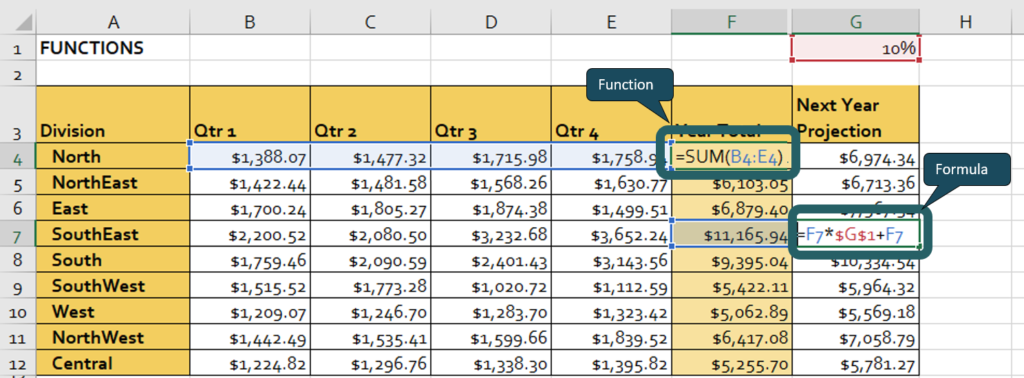Local Support with Excel Spreadsheets: The Power of Excel
Did you know a spreadsheet is little more than columns and rows, comprised of lists and lists? The real power in Excel spreadsheets is when you use Formulas and/or Functions.
Formulas and Functions aren’t the quite the same
Formulas and Functions both enable Excel to come up with the answers you need. Both start with an equal sign. =SUM(cells) or =B4+C4

Formulas

Formulas are essentially calculations built using cell references and mathematical operators. In the example on the right, we’ve calculated how many days there are between two dates. As such: [=] Ship Date [minus] Order Date would show how many days elapsed between the two dates.
As a more complex example, as in the example below, you can calculate years between dates. You have to use the order of operations. Cell references for Retirement Date [minus] Hire Date in parenthesis, then divide by how many days there are in a year.

Functions
- Functions are built-in calculations that Excel understands
- e.g. Sum the entire range of the row =SUM(C5:C7)
⇒ IF, IFS, IFERROR, ⇒ SUM, SUMIF, SUMIFS, ⇒ COUNT, COUNTIF, COUNTIFS ⇒ VLOOKUP ⇒ INT, ROUND ⇒ LEFT, RIGHT
Of the over 500 Functions (available in Microsoft 365, as of 2024), all Functions:
- Start with an equal sign ( = )
- Followed by the name of the function
- Include arguments, held within parentesis
Which Formulas and/or Functions do you use, or need help with?

Contact us to arrange personalized training in Excel. You’ll find a few posts about using Excel. Learn about absolute vs relative references, using proper Order of Operations, and grouping dates in PivotTables.
